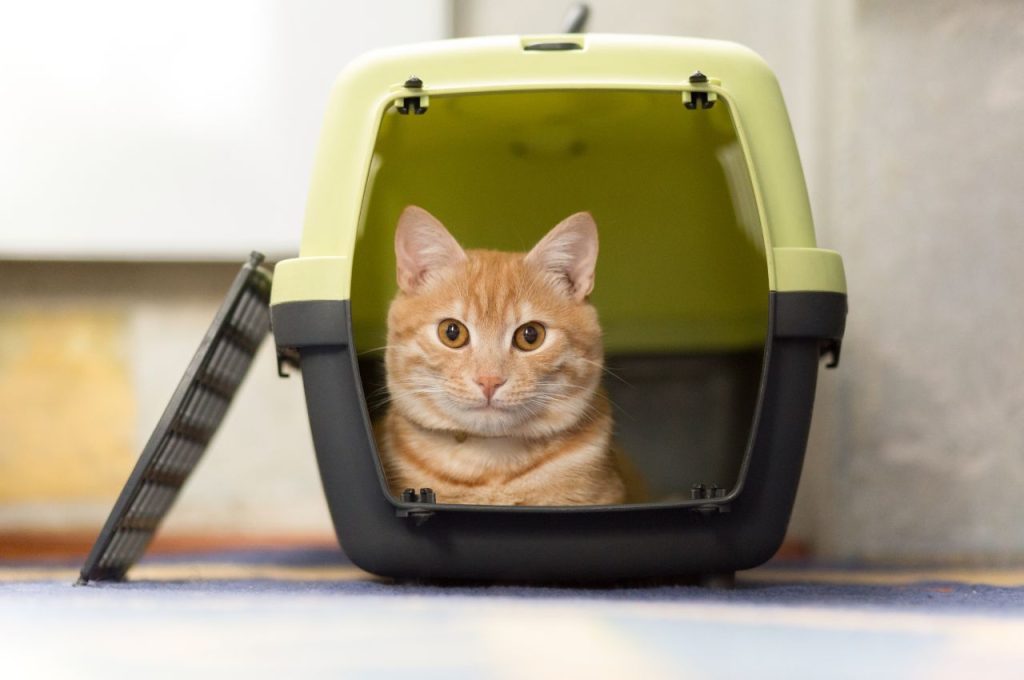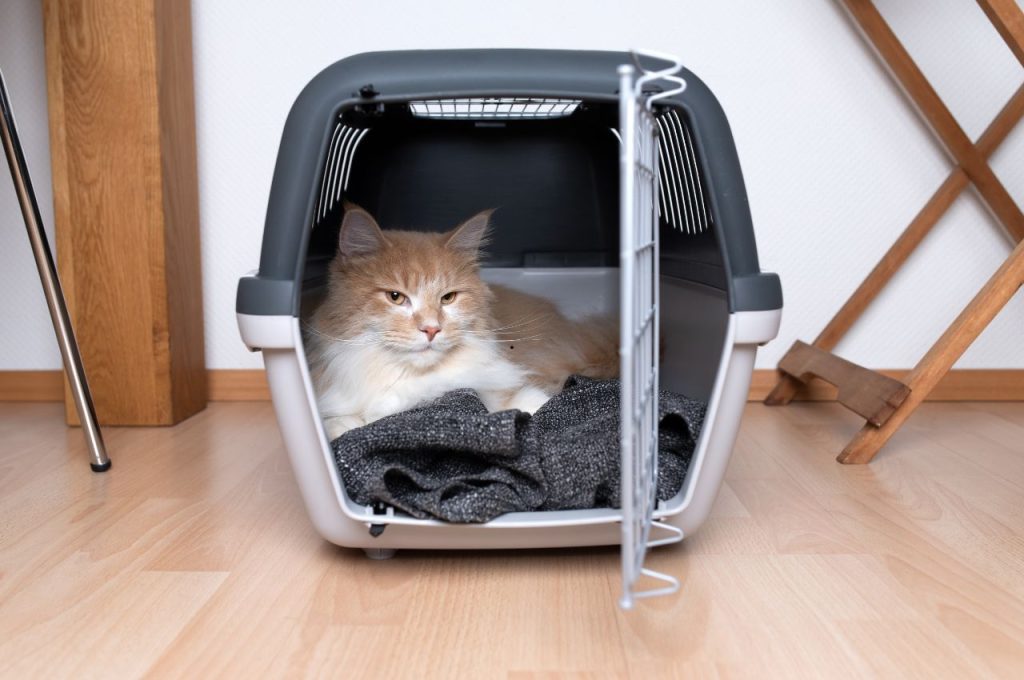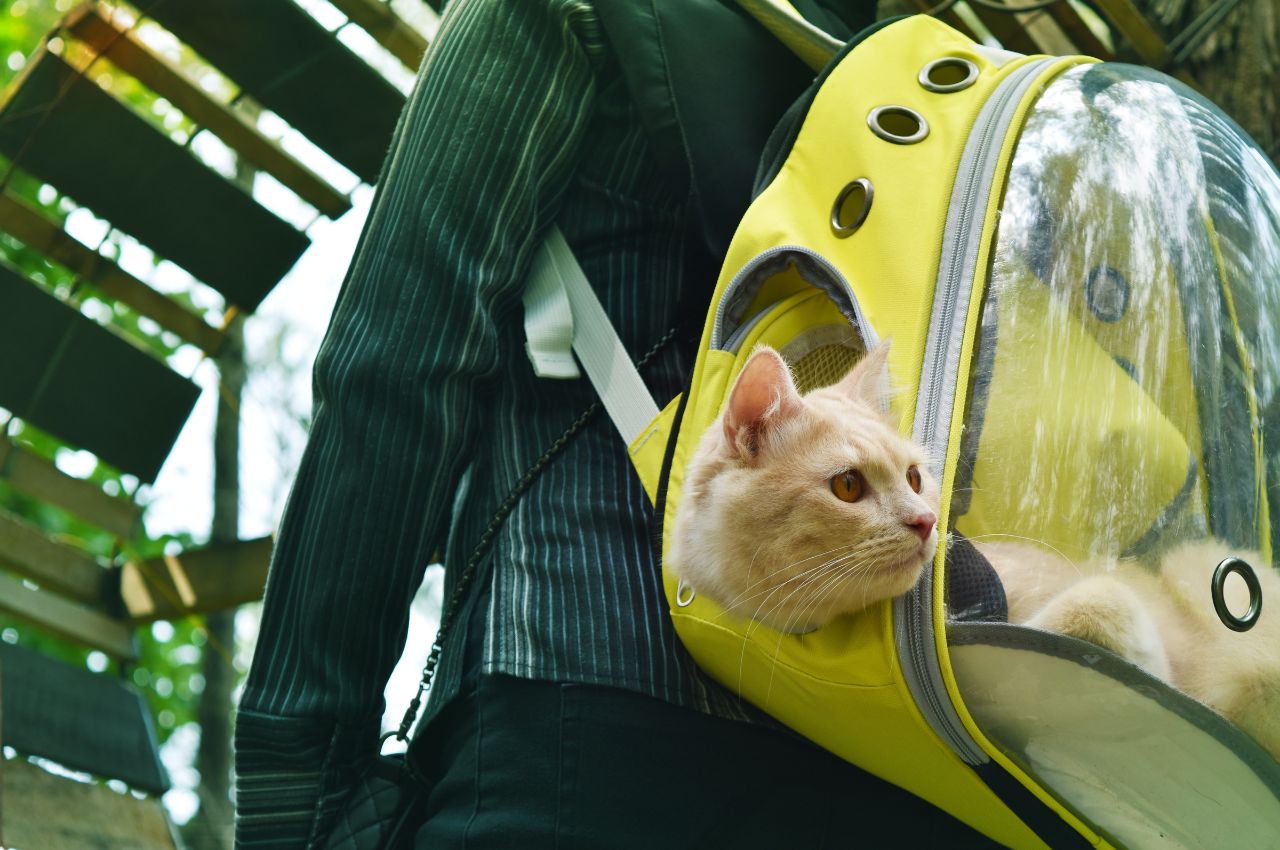Transporting cats across the country involves careful planning and preparation. To ensure a smooth journey, use a secure and well-ventilated pet carrier and schedule regular breaks for feeding, watering, and bathroom breaks.
Additionally, make sure to have all the necessary paperwork and identification tags for your cat. Moving your feline friend across the country can be a daunting task, but with the right approach, it can be a stress-free experience for both you and your pet.
Whether you’re relocating or going on an extended vacation, taking the time to plan and prepare for the journey will help ensure your cat’s safety and comfort throughout the trip. In this guide, we’ll explore the essential steps and considerations for transporting your cat across the country, so you can be well-prepared for the adventure ahead.
Preparing Your Cat for a Long Journey
Before embarking on a cross-country trip with your feline friend, it’s essential to ensure they are prepared for the long journey ahead. Taking the time to get your cat ready for travel can help reduce stress and make the experience more comfortable for both you and your pet.

Health Checks and Vaccinations
- Schedule a visit to the vet for a thorough health check-up.
- Ensure your cat is up to date on all necessary vaccinations.
- Ask your vet about any specific health concerns related to long-distance travel.
Getting Comfortable With The Carrier
- Introduce the carrier to your cat gradually to help them get used to it.
- Place familiar bedding and toys inside the carrier to make it inviting.
- Encourage your cat to spend time in the carrier by leaving it open in a quiet area.
By following these steps, you can ensure that your cat is prepared and comfortable for the journey ahead.
Choosing The Right Carrier
When it comes to transporting your furry feline friend across the country, choosing the right carrier is essential for a safe and comfortable journey. Here are some key considerations to keep in mind when selecting the perfect carrier for your cat.
Size and Comfort
Select a carrier that provides enough space for your cat to stand up, turn around, and lie down comfortably. A cozy and secure environment will help your cat feel more at ease during the journey. Ensure the carrier is well-ventilated and consider lining it with a soft blanket or familiar bedding to increase comfort.
Safety Features
Look for carriers with secure locking mechanisms to prevent any accidental escapes during transit. Opt for carriers with sturdy construction and durable materials to ensure the safety and security of your cat. Additionally, carriers with built-in safety harness attachment points provide an extra layer of protection.
Travel Options for Your Feline Friend
Transporting cats across the country can be a daunting task, but there are several options available to make the journey easier. Some popular travel options for feline friends include airlines, car travel, and pet transport services. Whichever method you choose, it’s important to prepare your cat for the journey and ensure their safety and comfort throughout.
When it comes to transporting your beloved cat across the country, it’s important to consider the travel options that will ensure their safety and comfort. Whether you choose to travel by car or by air, there are important factors to keep in mind to make the journey as smooth as possible for your feline friend.
By Car: Ensuring a Smooth Ride
Traveling by car can be a convenient and stress-free option when transporting your cat. To ensure a smooth ride, follow these guidelines:
- Prepare a comfortable and secure carrier for your cat, ensuring it is well-ventilated and large enough for them to move around.
- Place a familiar blanket or bedding inside the carrier to provide a sense of familiarity and comfort for your cat.
- Secure the carrier in the car using a seatbelt or by placing it in a secure area to prevent any movement during the journey.
- Make sure to take regular breaks to allow your cat to stretch their legs, use the litter box, and have some water.
- Keep the car temperature at a comfortable level, ensuring it is neither too hot nor too cold for your cat.
- Avoid leaving your cat alone in the car, especially in extreme weather conditions.
By Air: Navigating Airline Policies
If you choose to travel by air, it’s important to navigate through the specific policies set by airlines to ensure a safe and hassle-free journey for your cat:
- Research different airlines to find the ones that allow pets to travel in the cabin. Some airlines only allow pets to travel in the cargo hold, which may not be the most comfortable option for your cat.
- Check the airline’s requirements for cat carriers, as they often have specific dimensions and ventilation requirements.
- Ensure your cat is up-to-date with their vaccinations and health certificates, as airlines may require these documents before allowing your cat to board.
- Book your flights well in advance, as many airlines have limited space for pets in the cabin.
- Arrive at the airport early to allow for check-in procedures and ensure a smooth boarding process for your cat.
- Consider using calming aids, such as pheromone sprays or natural remedies, to help ease your cat’s anxiety during the flight.
By following these guidelines, whether you choose to travel by car or by air, you can ensure a safe and comfortable journey for your feline friends as you transport them across the country.
Creating a Travel-friendly Environment
Calming Aids and Toys
Help your feline friend stay calm during the journey.
- Consider using calming sprays or pheromone diffusers.
- Provide comfort items like favorite toys or blankets.
Frequent Breaks and Hydration
Ensure your cat stays hydrated and comfortable.
- Stop every 2-3 hours for breaks to stretch and use the litter box.
- Offer fresh water regularly to keep your cat hydrated.
Feeding Your Cat While Traveling
When it comes to transporting your cat across the country, ensuring they are well-fed throughout the journey is essential for their health and well-being. Feeding your cat while traveling requires some careful planning and preparation to ensure they receive the necessary nutrition and maintain their feeding schedule. In this section, we will discuss two important aspects of feeding your cat during travel: choosing travel-friendly food and maintaining a feeding schedule.

Choosing Travel-friendly Food
When selecting food for your cat during travel, it’s important to choose options that are easy to transport and won’t spoil quickly. Opt for dry cat food that comes in resealable bags or containers, as they are more convenient for travel and can be stored easily. Look for travel-sized portions or consider portioning the food in small zip-lock bags for easy access and feeding.
Table:
| Travel-Friendly Food Options |
| Dry cat food in resealable bags or containers |
| Travel-sized portions or portioned in small zip-lock bags |
Maintaining a Feeding Schedule
While traveling, it’s important to stick as closely as possible to your cat’s regular feeding schedule. Cats thrive on routine, and maintaining their feeding schedule will help reduce stress and ensure they receive the necessary nutrients at the right times. Plan your travel itinerary around your cat’s feeding schedule, making sure to allocate time for regular meals and water breaks.
Ordered List:
- Plan a travel itinerary around your cat’s feeding schedule.
- Allocate time for regular meals and water breaks.
- Stick to your cat’s regular feeding routine as closely as possible.
By choosing travel-friendly food and maintaining a feeding schedule, you can ensure that your cat stays nourished and comfortable throughout the journey. Remember to provide fresh water at all times and monitor your cat’s eating habits during travel to ensure they are adjusting well to the new environment. With careful planning and attention to your cat’s needs, you can make their cross-country journey a smooth and enjoyable experience.
Dealing With Anxiety and Stress
Transporting cats across the country can be a stressful experience for both the cat and the owner. To alleviate anxiety, it’s important to create a comfortable and familiar environment during the journey. Gradual introductions to carriers, calming aids, and regular breaks can help ease the stress and ensure safe travel for your feline companion.
Transporting a cat across the country can be a stressful experience for both the cat and the owner. Cats are known to be creatures of habit and can become anxious or stressed when taken out of their familiar surroundings. It’s essential to recognize the signs of stress and provide solutions and comforting techniques to make the journey as smooth as possible.
Recognizing Signs of Stress
It’s essential to keep an eye on your cat for any signs of stress during the journey. Some common signs of stress in cats include excessive meowing, panting, trembling, hiding, and aggression. If your cat exhibits any of these signs, it’s crucial to take immediate action to alleviate their stress.
Solutions and Comforting Techniques
To help alleviate your cat’s stress during the journey, you can try the following solutions and comforting techniques:
- Provide a comfortable and secure carrier: A carrier that is spacious, comfortable, and secure can make your cat feel safe and secure during the journey. Ensure that the carrier has enough space for your cat to stand and turn around.
- Familiarize your cat with the carrier: Before the journey, allow your cat to get familiar with the carrier by placing their favorite toys, blankets, and treats inside the carrier. This can make them feel more comfortable and less anxious during the journey.
- Keep the carrier in a familiar location: During the journey, keep the carrier in a familiar location, such as the back seat of your car or a quiet corner of your home. This can help your cat feel less anxious and more secure.
- Play calming music: Playing calming music, such as classical music or nature sounds, can help to soothe your cat and alleviate their stress.
- Use pheromone sprays: Pheromone sprays can help to calm your cat and reduce their anxiety during the journey.
Transporting your cat across the country can be a stressful experience, but by recognizing the signs of stress and providing solutions and comforting techniques, you can make the journey as smooth and stress-free as possible. Remember to provide a comfortable and secure carrier, familiarize your cat with the carrier, keep the carrier in a familiar location, play calming music, and use pheromone sprays to help alleviate your cat’s stress during the journey.
Safety Measures During The Trip
When transporting your cat across the country, ensuring their safety during the trip is paramount. Implementing proper safety measures can help alleviate stress for both you and your feline friend. Here are some essential safety measures to consider during the journey.
Securely Fastening The Carrier
Securing the carrier is vital to prevent any potential accidents during transit. Make sure the carrier is securely fastened in place using seat belts or other restraints to minimize movement. This will help maintain stability and reduce the risk of injury to your cat in the event of sudden stops or turns.
Temperature Control and Ventilation
Maintaining appropriate temperature levels within the vehicle is crucial. Ensure the interior remains well-ventilated to prevent overheating or discomfort for your cat. Opening windows slightly can help promote airflow, and using sunshades can assist in regulating the temperature. Avoid exposing the carrier to direct sunlight to prevent overheating.
Post-travel Care
Post-Travel Care is crucial for ensuring your cat’s well-being after a long journey across the country. It’s essential to help your feline friend adapt to the new environment and conduct a thorough health check to address any travel-related issues. Here’s how you can provide the necessary care for your cat after the journey.

Adjusting to a New Environment
- Creating a Safe Space: Set up a designated area in your new home for your cat to explore gradually. Ensure the space includes familiar items such as their bed, toys, and scratching posts to help them feel at ease.
- Slow Introduction: Introduce your cat to the new environment gradually, allowing them to adjust at their own pace. Keep other pets, if any, separated initially and gradually introduce them under supervision.
Post-travel Health Check
- Observation: Keep a close eye on your cat’s behavior and health in the days following the journey. Look for signs of distress, changes in appetite, or unusual bathroom habits.
- Veterinary Visit: Schedule a post-travel check-up with a veterinarian to ensure your cat is in good health. Address any concerns about motion sickness, anxiety, or other travel-related issues.
Conclusion
Transporting cats across the country can be a stressful experience for both you and your furry friend. However, by following the tips outlined in this blog post, you can ensure a safe and comfortable journey. From preparing your cat for the trip to choosing the right carrier and making frequent stops, these steps can make all the difference.
